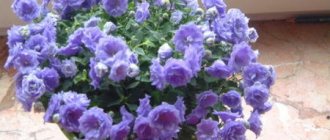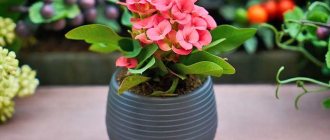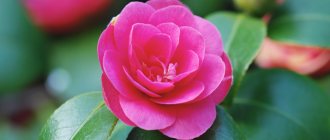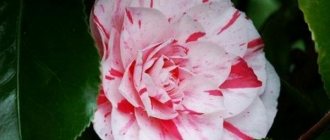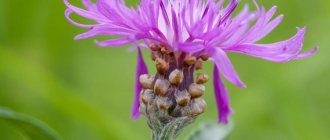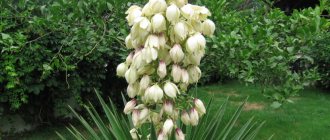A beautiful subshrub with the unusual name camellia, brought to Russia from Japan and the tropical Philippines, looks elegant at any time of the year. The bushes that bloom all season long do not shed their leaves even in winter, they look a little like roses, and vaguely resemble peonies. Regal camellia garden, planting and caring for which in open ground requires special attention, is considered a capricious plant among gardeners. But if certain growing rules are observed, it pleases the owners with lush flowering, delicate aroma and decorative appearance.
Description of the plant
Garden camellia (cameo) is an evergreen flowering subshrub that came to Europe from Japan, China and Korea, where it grows right on the edges of rivers and forests. It gained popularity among landscape designers due to its glossy dark green leaves with pointed ends and large flowers of soft pink, white and purple color. Under natural conditions, bush camellia blooms in winter, when temperatures reach 12°C. Moreover, the buds cover the branches for 2-3 months, sometimes longer.
With proper care, a shrub or tree grows up to 3-10 m, producing flowers with a diameter of 5-13 cm. Each opened bud has 5 petals and many stamens, and does not fall from the branch for a month.
On a note. Camellia is usually grown in the garden only by residents of warm regions, since the tree is quite heat-loving, even hybrid frost-resistant varieties cannot withstand frosts below 20°C. However, if you wish, you can bring the bushes planted in tubs or flowerpots into greenhouses and sheds in the fall and carefully cover them for the winter.
In landscape design, evergreen bushes are used for landscaping and creating unusual garden or park compositions. They are planted both individually and in groups. The garden Japanese camellia, which grows up to 10 m and produces single buds on the tops and axils of the branches, is especially valued by designers. The flowering of this interesting variety is shown in the photo below.
Types, varieties
Amateur gardeners and breeders have developed many varieties of garden camellia, numbering about 1000 varieties in the form of subshrubs, bushes, trees of different sizes with simple, semi-double and double flowers of different diameters. However, only 3 types are considered the main ones.
- Mountain (Miyagi). It is a shrub up to 3 m high with dark green ovoid leaves, glossy on the outside, with pubescence at the bottom. The leaves have grooves along the edges and reach a length of 3-5 cm. Flowers with a diameter of about 7 cm are distinguished by their delicate color, tinged with pink, white or reddish. They can be collected in 2-3 buds or bloom singly. Camellia Miyagi blooms from November to January-February.
- Japanese. It often grows as a shrub, but it can also be tree-like, reaching a height of 11-13 m. It has ovoid glossy leaves, sometimes taking the shape of an ellipse, pointed at the edges. Small or large flowers with a diameter of 4 to 12 cm can be collected in groups of 3-4 or bloom singly, delighting the owner with their appearance from December to March.
- Chinese (tea bush). It is an evergreen shrub with erect branches. The leaves of the tea bush are oval-elongated, alternate, dark green, 6-7 cm long. Below they are lighter in color. The fragrant flowers are solitary, appear in August, do not fall until late autumn, and are located in the axils of the leaves. The fruits are woody capsules.
Thanks to the development of frost-resistant, winter-hardy varieties of Japanese camellia, the crop can be grown as a perennial plant in open ground. The most popular hybrids that bloom in spring are the following:
- “Hagoromo” is a shrub with a dense crown and elongated branches, all spring covered with chameleon flowers that change shade from pearl pink to white;
- “Freedom Bell” is an upright tree with dense branches, having red flowers with a delicate coral tint, which tolerates pruning well;
- "Donation" is a slow-growing ornamental shrub with purple-pink flowers with a diameter of 10 cm;
- "Debbie" is a fast-growing species with small semi-double buds of pink-purple color;
- “General Colletti” is a hybrid with variegated flowers of a bright red hue, with white and scarlet streaks on the petals.
In the photo below you can see how different varieties of camellia bloom.
Camellia japonica
Adolphe Audusson
Giardino Schmitz
Proper care of the camellia houseplant (with video)
The care and maintenance of the camellia flower should be thought through in detail and not left unattended for a long time. To successfully cultivate this evergreen “pet,” you need to create conditions for it similar to those in which the bush grows in nature. The ideal place in the apartment would be a glazed loggia with a constant flow of fresh air.
In other words, a location in which the plant will be comfortable - all year round in a room with a lot of air and light.
It is important to regularly spray the plant so that the earthen ball is additionally moistened and the leaves do not dry out under sunlight. For this purpose, it is necessary to use water that settles for irrigation.
Air humidity must be high, otherwise the plant will begin to wither. Do not keep the pot near a radiator, heater or other places where it is too warm and dry. In winter, leaves and buds should be irrigated daily with a fine-drip sprayer, being careful not to touch the flowers.
It is important to note that drafts are very undesirable for the plant. In the summer, it can be taken out into the garden, but not under the scorching sun, but in shady areas between trees, where light enters in limited but sufficient quantities. It is best to dig the pot into the ground and not move the flower until it needs to be brought back.
It is not always easy to create the necessary growing conditions for camellia at home, but if you move the plant to the garden or balcony for a while, such migration processes will have a beneficial effect on the condition of the shrub.
But it is also worth taking into account the growth phases so that such “movements” do not damage the flower. Thus, from June to July, the bush is characterized by a phase of active leaf growth. If the gardener’s goal is flowering, it is better to wait to take it “out into the fresh air” until the crown stops actively growing leaves. At this time, before bringing the indoor, sophisticated camellia flower into the house, you need to water it less often than usual, every time the young leaves begin to droop a little.
It is worth remembering a few tips about watering, which differs at different stages of a camellia's life.
First of all, the amount of watering depends on the temperature in which the shrub grows: the higher it is, the more moisture is required. It is important to learn to find a “balance” between the level of moisture and dryness of the earthen ball, so that it is not damp and too dry.
The spring and summer months deserve special attention for professional irrigation . So, in June, home shrubs need to stop watering abundantly. It is under this regime that the buds are formed.
Dry starvation without sufficient water causes the plant to set buds, and if there is no dry starvation, the crown will actively grow without the desired flowering. As soon as buds appear on the bush, it requires abundant watering and fertilizing with azalea fertilizers. From September, soil irrigation should be further reduced to 1-2 times a week.
The main rule of experienced gardeners is to water regularly and evenly moisten the soil. Soften and settle the water before watering; do not use it directly from the tap.
Regarding the temperature of the liquid for irrigation, it is worth considering the fact that the flower grows in the cold. That is why you should not water it with warm water.
Before the plant puts on buds, you need to find out how camellia actually blooms and where to look for these buds. They are tied in the axils of the leaves, which are adjacent to the top. If there are many flowers in the ovary, you need to leave 1-2 buds and cut off the rest.
Such actions stimulate the growth of larger flowers, since the vital forces of the plant will go directly to them, and will not be scattered into a large number of small ovaries. Also, by cutting off excess buds, the plant is protected from shedding all its flowers, as they may be too heavy for the camellia.
Information on camellia care is presented in the video; it is worth watching to study in detail aspects related to maintaining the health of the flower:
Not all varieties benefit from being outside; for example, “Chandlery Elegance” should be kept indoors all year round:
If you want not only to admire the green crown, but also to achieve flowering, the pot with the plant should be placed in a sufficiently lit place. A window sill located in the southwestern part of the building is suitable for this. This way you can prevent direct sunlight from constantly hitting the graceful foliage. It is undesirable to move the plant even during harvesting; this is especially contraindicated during the formation of buds, when they are fragile and can crumble.
Proper care of indoor camellia flowers in familiar home conditions suggests that varieties intended to grow in warm conditions can also set buds, just like garden species. With proper care, attractive inflorescences of domestic beauties can be seen in January - February.
Proper care of indoor plants, in particular camellias, is impossible without fertilizers. It needs to be fed from May to July inclusive with complexes of mineral fertilizers for flowering indoor plants (azaleas). However, to get the best effect, it is advisable to alternate feedings:
- In July - granulated chicken manure, but it should not be used more than once a year.
- From the beginning of August - extreme fasting for high-quality flowering.
- In autumn - fertilizers to maintain acidity in the soil.
If you follow the fertilizing schedule and water the plant properly, it will delight you with lush flowering and a rich foliage crown for a long time.
Selection of location and conditions of detention
Planting camellias and caring for them in the garden may seem quite difficult to some, because the perennial flower requires proper wintering and does not tolerate severe frosts or close proximity to groundwater. In what conditions should the beautiful cameo be grown?
- Lighting and location. The plant loves diffused sunlight, but the bright rays of the sun are unpleasant for it and can cause burns to leaves and buds. The best option for planting is the western or eastern part of the garden, where there is no wind and strong shade. It is better to plant seedlings on a hill, along fences or walls of a house.
- Temperature. Modern frost-resistant varieties can withstand frosts of 15-20°C in winter. However, in central Russia, bushes require shelter with non-woven material and spruce branches, otherwise the branches with roots will die during prolonged cold weather. In pots, plants can overwinter at temperatures of minus 10-15°C.
- Air and humidity. The bushes do not tolerate strong gusts of wind and drafts, so it is worth providing protection from them throughout the year. In spring and summer it is also necessary to protect crops from drought and overwatering.
- Priming. Cameo prefers to grow in acidic soil. If you use a purchased soil mixture for growing in a tub, the composition for rhododendrons or azaleas is suitable. If the soil is prepared independently, peat, sand, pine litter, humus and perlite are mixed in equal parts. Be sure to add a drainage layer of expanded clay, fine gravel or pebbles to the bottom of the planting hole.
How to grow camellia at home (video)
It is necessary to prepare planting holes in advance, the bottom of which should be filled with approximately five centimeters of expanded clay of the middle fraction or natural pebbles, which will prevent waterlogging of the soil, and, as a result, reduce the risk of damage to the camellia root system by rot. To fill the planting hole, it is allowed to use a ready-made nutrient substrate, but experienced gardeners prefer to use self-prepared soil based on coniferous soil, peat soil, the middle fraction of sand and sphagnum moss or sawdust mixed in equal proportions.
To increase soil fertility, you can add a complex composition based on sulfur, potassium, phosphorus and nitrogen components in combination with basic microelements.
Planting garden tree camellia seedlings should be carried out with extreme caution, due to the fragility of the root system. In order to minimally injure the roots of an ornamental plant, it is recommended to replant the crop from a shipping container along with a lump of earth, using the transshipment method. It is very important to deepen the roots correctly. The root collar should be located at the same level as the soil surface or slightly higher. Otherwise, the flowering of garden camellia may be completely absent.
When to plant
Camellia seedlings are planted in open ground in April, around 15-20. Planting is completed on the tenth of June. They dig up a bed or flowerbed in advance, adding complex compounds in the form of granules. The process of planting from a container into street soil consists of several steps.
- Carefully remove the seedling from the pot, being careful not to damage the fragile roots.
- Place the cutting in the hole where the training material and a layer of nutrient soil have already been poured.
- Sprinkle the roots with soil without deepening the root collar.
- Compact the soil with your palms, water and mulch with sawdust and humus.
- The first week is shaded from direct sunlight, then watered regularly.
The use of camellia in landscape design
Garden camellia is widely used to decorate summer cottages, create landscape compositions, and single plantings. The plant is used to decorate hedges and city flower beds.
Camellia looks great when planted in the foreground in the shade of tall evergreen perennials.
Some gardeners and designers grow camellias in flowerpots to decorate verandas, entrance areas and garden paths.
Climbing camellias are planted to decorate gazebos, verandas, arches, and trellises.
Rules for caring for and growing in the garden
Caring for cameo in open ground when grown outdoors consists of regular watering, fertilizing, pruning and rejuvenating replanting as it grows.
- Watering. In the summer, the cameo is watered abundantly; in the heat, the leaves are additionally sprayed so that they do not dry out. In autumn, watering is reduced so that the roots do not get wet during the rainy season.
- Feeding. In spring and during the summer growth period, camellia is fed 2 times a month with mineral fertilizers or organic matter. The compositions are applied in liquid form immediately after watering. In autumn, fertilization is stopped.
- Loosening, mulching. They loosen the soil a couple of times during the summer, usually after watering. Mulch to protect against weeds and drying out of the soil with spruce litter, peat, dry leaves or sawdust.
- Trimming. Formative pruning of the bush is carried out in early spring in order to ultimately obtain a bush with an even and dense crown. Protective pruning is carried out in the fall; it helps protect the branches from freezing in the absence of snow or shelter.
- Transfer. Young plants are replanted annually, then, after flowering begins, once every 2 years. Transplantation is carried out during the rest period, from October to November.
Diseases and pests - table
Camellia is rarely affected by diseases and pests. But nevertheless, errors in care can sometimes lead to undesirable consequences, the rules for eliminating which you need to know.
| Disease/pest | Signs of appearance | Control measures | |
| Chlorosis | The leaves acquired a light color and green veins became noticeable. |
| |
| Oidium | Gray spots appear on the plant. | An excellent remedy for combating oidium is Colloidal sulfur (30 g per 10 l); a 2% solution of DNOC is also used. | |
| Yellow spot | Yellow spots of irregular shape appear on some leaves and shoots. This is caused by genetics or a virus. |
| |
| Cucumber mosaic virus | The leaf veins turn yellow. |
| |
| Phyllosticosis | Brown spots of irregular shape appear on the leaves. |
| |
| Scale insects and false scale insects | White tubercles appear on the stems and leaves, looking like a dense coating. | If the pest is small. it is removed with a toothbrush, after which the plant is smeared with a swab soaked in kerosene. But if the problem has managed to grow, use a soap solution (15 g of liquid soap, 10 ml of denatured alcohol per 1 liter of warm water), Actellik il Fosbecid (20 ml per 10 l). | |
| Thrips | The leaves in some places are unevenly colored yellow-white. When severely damaged, they turn yellow and fall off. | Repeated treatment with Aktara, Actellik, Fufanon (10 ml per 10 l), Fitoverm (2 ml per 1 l) and Iskra (1 tablet per 10 l) is used. | |
| Spider mite | At first the leaves are covered with small white specks, and then become discolored. Sometimes you can see a thin web between them and the mites themselves on the underside of the leaf. | You can use a soap solution for mild damage, but for a massive attack you should use Fitoverm, Akarin (2 ml per 1 l), Vermitek (5 ml per 10 l) and Molniya (2 ml per 10 l). | |
| Aphid | The leaves turn yellow, become discolored and dry out. Accumulations of aphids can be found on the stems and inside of leaves. | The simplest and most effective way is to use a soap solution. If there are few aphids, they are collected by hand. In case of severe damage, you can use Fitoverm or Aktara. | |
| Weevil weevil | The leaves are eaten away at the edges. If the pest attacks the roots, the plant dies very quickly. | Generally accepted means for combating this pest are Bazudin (15 g per 10 sq. m.), Fly eater (40 g per 1 sq. m.) or Iskra. | |
Reproduction methods
Cameo can be propagated in two ways:
- seeds;
- cuttings.
The seed growing method is usually used by breeders, planting seeds in containers with nutrient soil, 5-7 pieces each, under film or glass. The process is quite lengthy and labor-intensive.
When propagating by cuttings, young green shoots are cut from the bush (only the tops are taken) and rooted in water or soil. When roots and new leaves appear, the cuttings are transplanted from cups into spacious containers and grown in them for 2-3 years. It’s even easier to buy ready-made seedlings at a garden center to immediately plant in a permanent place.

